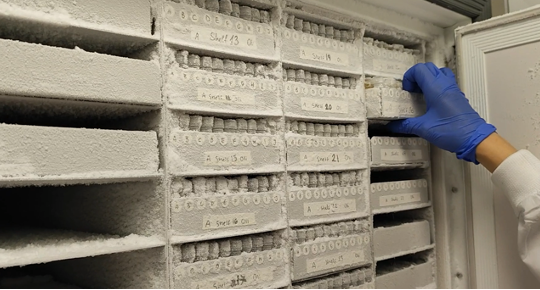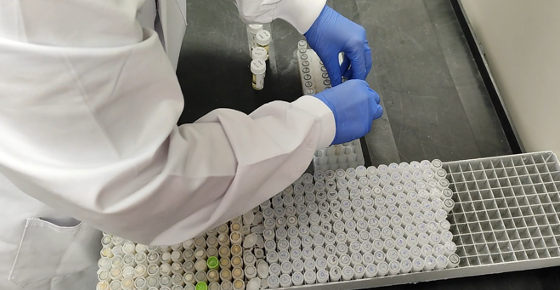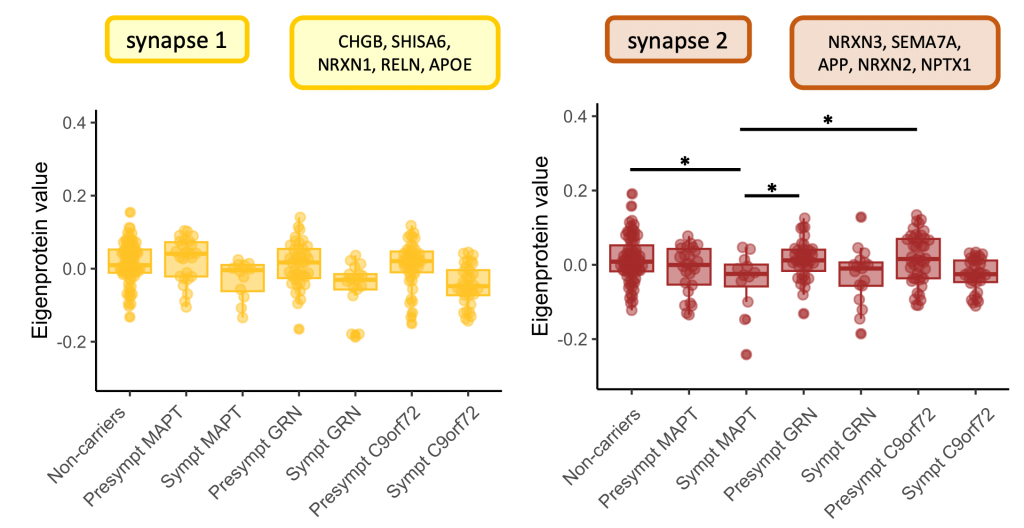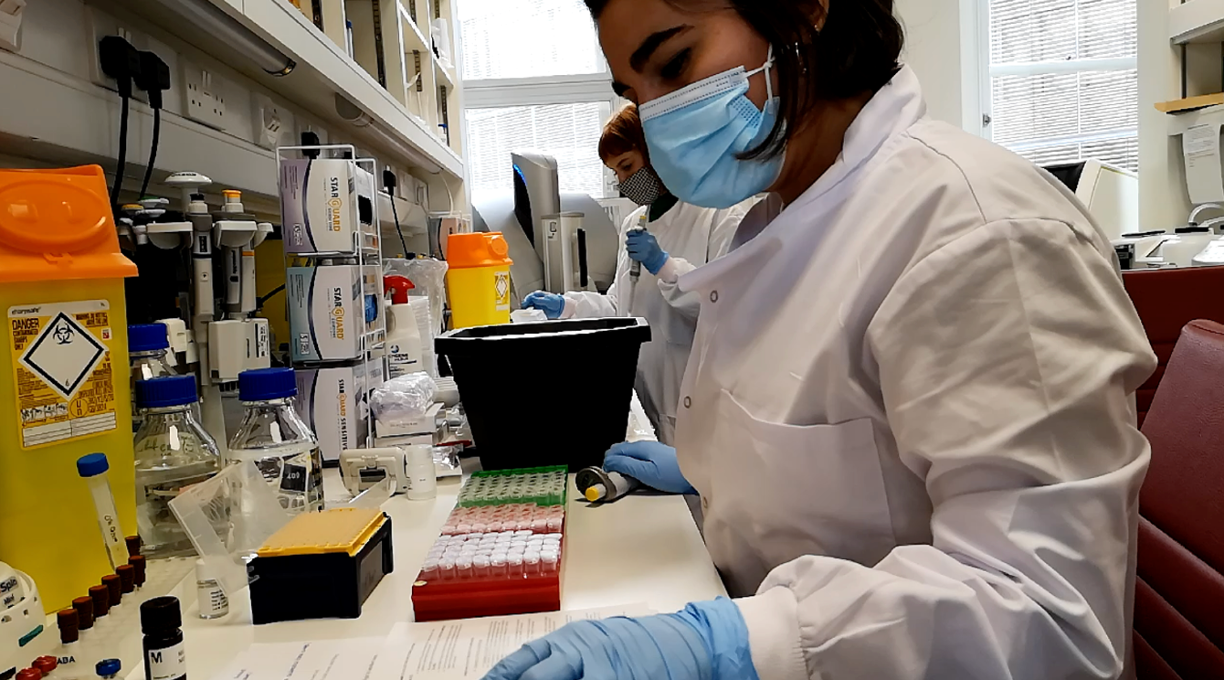What are fluid biomarkers and what are they used for?
Fluid biomarkers typically refer to proteins in the blood or cerebrospinal fluid (CSF) that inform us of disease onset and progression. Importantly, these fluid biomarkers can be used to identify signs of neuronal degeneration. In individuals with frontotemporal dementia (FTD), proteins signalling abnormal cellular function and inflammation can be found in the CSF and blood. Our fluid biomarker team at the genetic frontotemporal dementia initiative (GENFI) investigates how levels of these proteins change over time, as well as how they differ between individuals with different FTD-associated genetic mutations (including microtubule associated protein tau (MAPT), progranulin (GRN), or chromosome 9 open reading frame 72 (C9orf72).
What do the fluid biomarkers team do?

The GENFI fluid biomarker team includes Senior Research Fellow Aitana Sogorb-Esteve, PhD Student Imogen Swift, and Research Assistant Katie Thompson, who investigate fluid biomarkers in genetic FTD. Each member of the team has a specific research focus. Dr Aitana Sogorb-Esteve investigates novel biomarkers (biological markers of disease) of FTD, with particular focus on impaired synaptic functioning and the involvement of exosomes – the brain’s messengers to aid cellular communication. Imogen Swift is developing markers for GRN-associated FTD, with the aim that these markers could be used to diagnose and monitor stages of disease. They may also be used to evaluate the effectiveness of therapeutic interventions in patients in clinical trials in the future. Katie Thompson is working on inflammatory fluid markers such as those released by microglia – the resident immune cells of the brain – that can help us to better understand FTD disease progression. As such, the research focus of the team is diverse!
If I am involved in genetic FTD research, what might happen to my blood and CSF?

When running an experiment in the laboratory, participant’s CSF and blood samples are collected from the storage freezer to thaw whilst the team begin preparing their workbenches. When running an experiment, the team always prints out the experiment protocols and makes notes in their lab books, to ensure each step of the procedure is well documented. It is very important to keep track of time and to record any comments on individual samples used.

During a long incubation period or gap in an experiment, the team will take a lunch break or continue with other tasks such as filling in sample spreadsheets or discussing project developments and future steps. To complete an experiment, the samples are transferred to a machine called a plate reader. Plate readers can tell us about the concentration of a protein of interest within each sample, allowing us to collect numerical data that can be analysed later.
What can fluid biomarkers tell us?
Once analysed, this numerical data can tell us how levels of proteins vary between individuals with either C9orf72, GRN or MAPT associated FTD, as well as between early and later stages of the disease. More specifically, we use data from our studies to build a picture of protein markers that are specific to disease stage and genetic mutation type, with the overarching aim of helping clinicians identify patients with genetic FTD. Some recent work has demonstrated that the marker called ‘YKL-40’ – a protein implicated in inflammation – is significantly increased in people with C9orf72, GRN and MAPT mutations who are in the later stage of FTD compared to early stage individuals.

Similarly, researchers have investigated proteins in the synapses, finding changes in late stages versus early stages of disease. A synapse is the small gap at the end of a neuron that allows messages to travel from one neuron to another neuron. Reserach has revealed that levels of these synapse proteins, including proteins implicated in the formation of synapses, are decreased in C9orf72, GRN, and MAPT mutation carriers at later disease stage when compared to healthy individuals and those at an early disease stage.
Altogether, the ability to differentiate patient groups using biomarkers will allow patients to take part in clinical trials specific to their disease stage (early versus late) and mutation type (C9orf72, MAPT, or GRN). Plus, monitoring how particular levels of fluid biomarkers change in response to drug interventions may help clinicians to evaluate how effective the intervention is – a question crucial for future clinical trials.
Katie Thompson, on behalf of the FTD talk team.
Keep up to date on all things research by following us on twitter – @FTDtalk / @GENFI1

